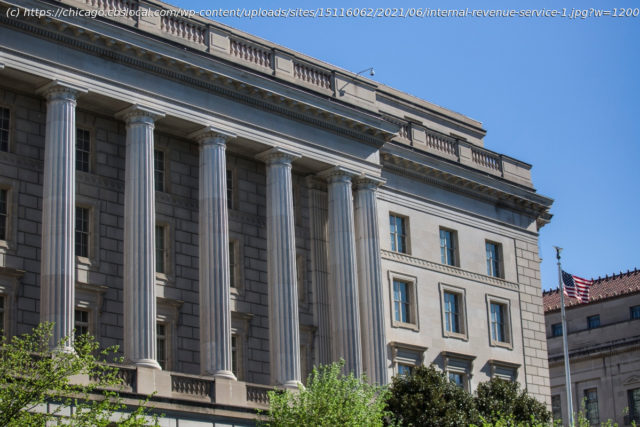The revised Child Tax Credit, as part of the American Rescue Plan, increases the amount of money paid to parents and changes its implementation.
(CBS Detroit) — The revised Child Tax Credit will start giving parents more money in the coming weeks. The credit originated in the late 1990s to help defray the costs of raising a child. President Biden’s American Rescue Plan, passed in mid-March, changes the amount and how it’s distributed. The $1.9 trillion COVID relief package increases the amount from $2,000 to as much as $3,600, depending on the child’s age and the family’s income. And qualifying parents will receive payments monthly rather than only at tax time. Payments will start this summer. While these and other details have been available for months, one key piece of information remained murky — the program’s start date. The Treasury Department and Internal Revenue Service (IRS) have since ended the suspense. Child Tax Credit payments will be automatically deposited on a monthly basis starting July 15. Each subsequent payment will be issued on the 15th of the month through December of 2021. If the 15th is a weekend or holiday, the money will arrive on the nearest prior business day. (August 15th falls on a Sunday, so that month’s distribution will arrive on August 13.) The remainder will be credited to a recipient’s 2021 taxes. Most eligible parents will not have to do anything to receive the money. It will just start arriving based on the information the IRS already has on file. The revised Child Tax Credit is scheduled to apply only to 2021. The rules of reconciliation, which Democrats used to push through the stimulus package containing the expanded credit with a simple majority, don’t allow for deficit spending. Legislation must be deficit-neutral or deficit-reducing for the year, as well as for the next five years and 10 years. The thinking was that the program will be widely popular, leading supporters to force Congress to extend it. Biden has since come out in favor of extending the enhanced credit until 2025 as part of his American Families Plan. The plan, worth approximately $1.8 trillion, seeks to address inadequacies in childcare, education and paid leave. A fact sheet on the plan calls it “an investment in our children and our families—helping families cover the basic expenses that so many struggle with now, lowering health insurance premiums, and continuing the American Rescue Plan’s historic reductions in child poverty.” A recent statement from the president once again urged Congress to extend the updated Child Tax Credit. “The American Rescue Plan is delivering critical tax relief to middle class and hard-pressed working families with children,” the statement reads. “Congress must pass the American Families Plan to ensure that working families will be able to count on this relief for years to come.” Many Democrats want to go a step further and make the revised Child Tax Credit permanent. Massachusetts Representative Richard Neal, chairman of the House Ways and Means Committee, put forth a plan to do just that. The suggested change came as part of a broader draft proposal to guarantee paid family leave and access to childcare. How much influence this has on the American Families Plan is unclear. The American Families Plan, in its proposed form, faces a tough path through Congress. For parents of children up to five years old, the IRS will pay a total of $3,600, half as six monthly payments and half as a 2021 tax credit. That amount changes to $3,000 total for each child ages six through 17. The IRS will make a one-time payment of $500 for dependents who are 18 or fulltime college students up through age 24. Payments will be based on the adjusted gross income (AGI) reflected on a parent or parents’ 2020 tax filing. (AGI is the sum of wages, interest, dividends, alimony, retirement distributions and other sources of income minus certain deductions, such as student loan interest, alimony payments and retirement contributions.) The amount phases out at a rate of $50 for every $1,000 of annual income beyond $75,000 for individuals and beyond $150,000 for married couples. The benefit will be fully refundable; it will not depend on the recipient’s current tax burden. Qualifying families will receive the total amount, regardless of how much — or how little — they owe in taxes. There is no limit to the number of dependents that can be claimed. For example, suppose a married couple, with an annual joint income of $120,000, has a three-year-old and a nine-year-old. The IRS would send them a monthly check for $550 starting in July. That’s $300 per month ($3,600 / 12) for the younger child and $250 per month ($3,000 / 12) for the older child. Those checks would last from July through December. The couple would then receive the $3,300 balance — $1,800 ($300 X 6) for the younger child and $1,500 ($250 X 6) for the older child — as part of their 2021 tax refund. Parents of a child who ages out of an age bracket will be paid the lesser amount. That means if a five-year-old turns six in 2021, the parents will receive a total credit of $3,000 for the year, not $3,600. Likewise, if a 17-year-old turns 18 in 2021, the parents will receive a one-time payment of $500, not $3,000 spread over six months and a tax refund the following April.






